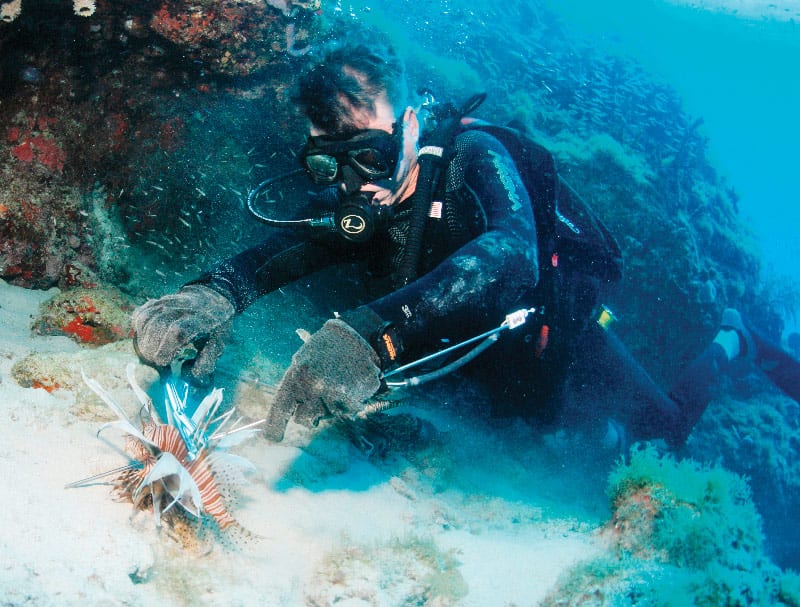Invasive Lionfish first appeared on the edge of Broward and Dade County shorelines in 1985, then slowly spread to Palm Beach by 1995. In 2000, they had pushed up to North Carolina and out to Bermuda and in 5 years, the Bahamas followed. By 2009 to 2010, the population exploded to all Florida coasts, west to Texas and Mexico, north to Rhode Island, south throughout the Caribbean, Central America, and northern South America. The last 8 years have seen massive density increases, but divers are fighting back and putting thousands of these tasty fish on dinner tables! Lionfish rival hogfish and red snapper as quality table fare, but only get a little over 19 inches long. I recently speared another personal record 17 incher, but usually only spear little ones to leave for hungry native creatures. There is no size, quantity limit, or closed season, but remember you have to fillet every fish you keep.

Reef.org started lionfish derbies in 2009 with over 21,000 lion fish taken since. Their 2018 derby schedule can be seen on reef.org. Also myfwc.com lists most Lionfish derbies and lists many existing spearfishing tournaments that now include lionfish categories and even many lionfish derbies by new organizations.
If you’re not a diver, many restaurants are also serving lionfish, so give it a try!
Shoot straight!
Capt. Chad Carney
(727) 423-7775
www.floridaskindiver.com
email: chad.carney@yahoo.com


